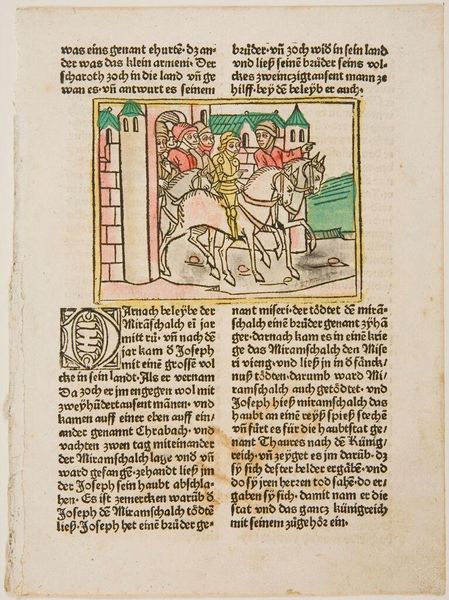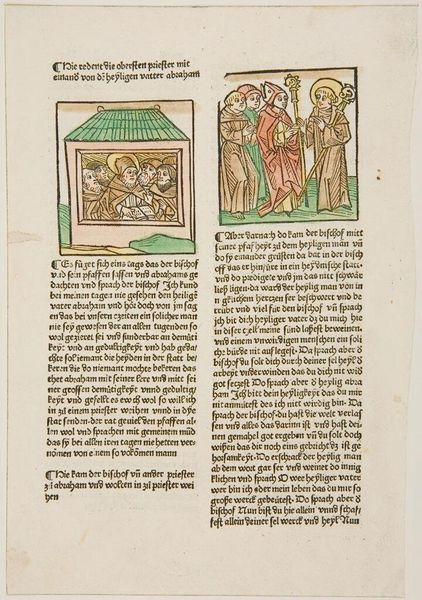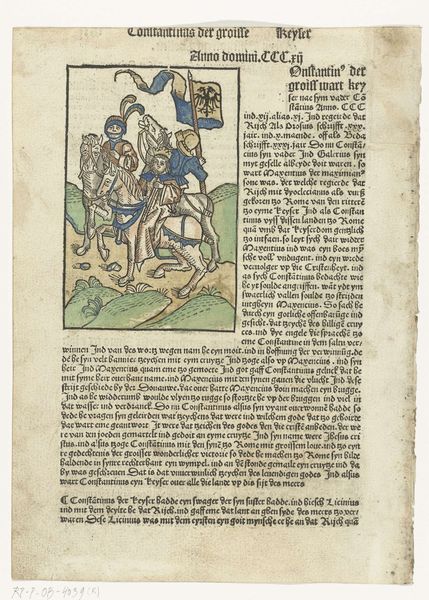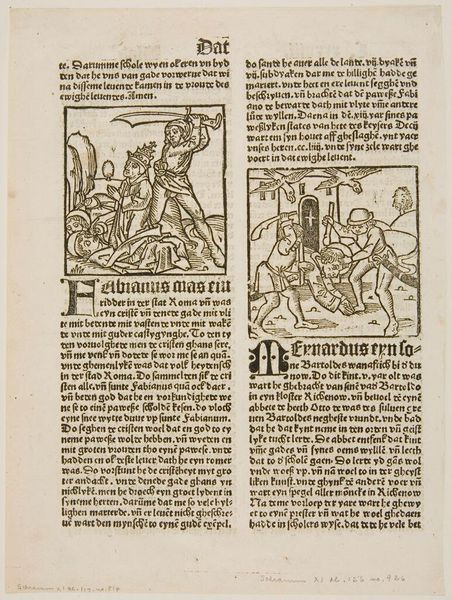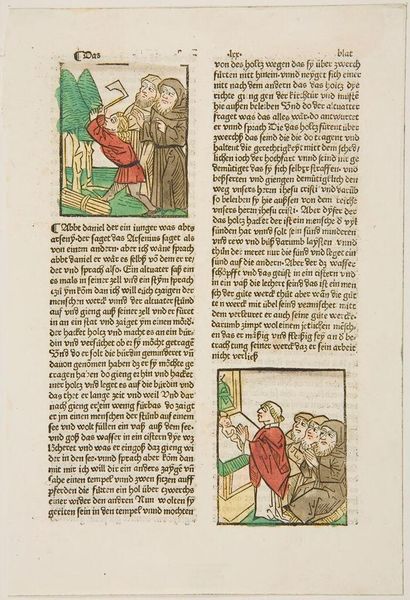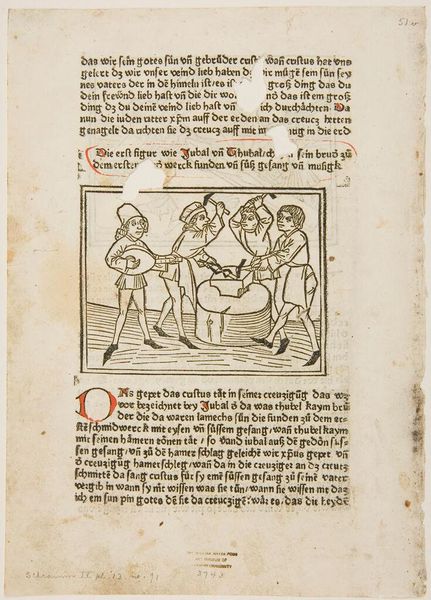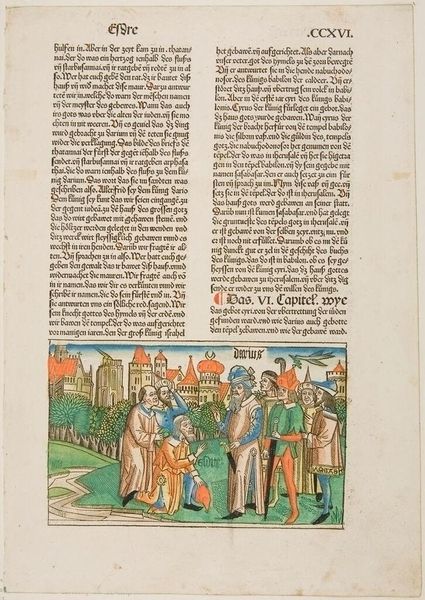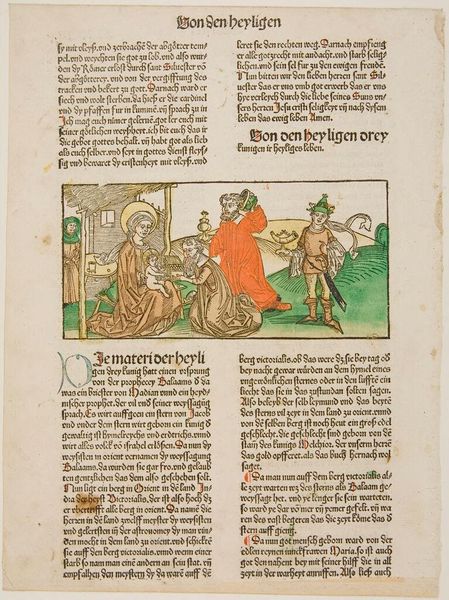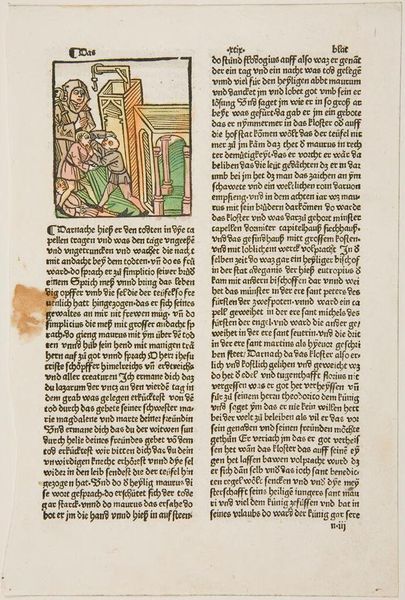
Copyright: CC0 1.0
Curator: Let's consider this anonymous woodcut, "Of Great Tartaria," currently held within the Harvard Art Museums. Editor: It strikes me immediately with its fairytale-like quality. The colors are so vibrant, and the figures, especially the animals, have this wonderful, almost naive quality. Curator: Indeed. These illustrations accompanied printed texts, expanding access to information and shaping early modern European understandings of the world. "Tartaria" refers to a broad swathe of Central Asia. Editor: So, the artist, or perhaps the printer, is attempting to depict the exotic "other," reinforcing stereotypes through visual representation. We see figures atop camels and horses, suggesting travel or procession. I wonder how accurate these portrayals were. Curator: Accuracy wasn't the primary goal, I suspect. It's more about conveying a sense of the region's perceived wealth, its people, and its customs, however imagined or misrepresented through a European lens. Editor: It’s fascinating how images like this fueled both curiosity and potential prejudice. It's a potent reminder of the power of visual culture to shape perceptions and solidify power dynamics. Curator: A poignant insight. Thank you. Editor: Thank you, as well. It's a reminder that even seemingly harmless images are embedded in complex historical and social contexts.
Comments
No comments
Be the first to comment and join the conversation on the ultimate creative platform.
